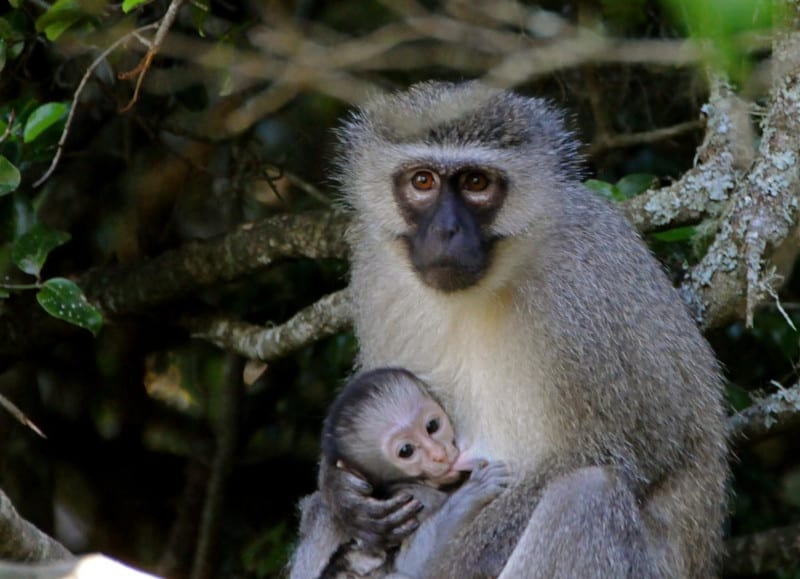
Vervet Monkey Facts
- Firstly, the rather remarkable Vervet Monkey constitutes a species of simian endemic to a specific portion of the world. However, the actions of mankind also introduced it to numerous other areas.
- Further, many researchers consider it to possess numerous human-like personality characteristics. Unfortunately for it, however, these include anxiety and hypertension. As a result, its behavior has been widely studied.
- The remarkable Vervet Monkey generally lives in groups that number between 10-70 individuals. However, once males reach sexual maturity, most individuals usually migrate to another group.
- Also, unlike many related creatures, this animal appears to be maintaining a stable population. Because of this surprisingly pleasant fact, the IUCN currently lists it as a Species of Least Concern.
Related Articles
Vervet Monkey Physical Description
As with most primates, the Vervet Monkey displays a moderate degree of sexual dimorphism. Though rather small compared to other monkeys, this simian nonetheless remains a fascinating species.
The males average roughly 12 lb (5.5 kg) in weight. Additionally, large males sometimes reach as much as 24 in (61 cm) in length. Meanwhile, the females usually attain a weight of about 9 lb (4.1 kg). Some females grow to as much as 19.5 in (48 cm) long.
Of course, these measurements of length naturally include the tail. Body coloring for both genders primarily stays a light gray. Finally, its black face develops surrounded by a fringe of white hair.
- Kingdom: Animalia
- Phylum: Chordata
- Class: Mammalia
- Order: Primates
- Family: Cercopithecidae
- Genus: Chlorocebus
- Species: C. pygerythrus
Vervet Monkey Distribution, Habitat, and Ecology
Most notably, the remarkable Vervet Monkey evolved as endemic to a specific portion of the Southern Hemisphere. More notably, this zone of habitation consists of a rather large portion of southern Africa.
Also, throughout its endemic range, this primate normally inhabits tropical forest regions. Luckily for it, however, it also appears to be quite adaptable to the different habitats it has been introduced into.
Further, while males depart the group upon maturity, females generally remain for life. Social status also displays a dependency upon a hierarchy system within each gender, much like humans.
The Vervet Monkey also has an omnivorous diet. As a result, it primarily feeds on a variety of flowers, seeds, leaves, and fruit. Individuals will also feed on a variety of insects. In regions where it represents an introduced species, it often feeds on the local agricultural crops.
Finally, the principal natural predators of this simian include eagles, leopards, and pythons. But sadly, humans often pose a serious threat to it. These threats include both intentional hunting and accidental death due to contact with power lines or vehicles.
Species Sharing Its Range
Check out our other articles on 5 Rare Mind-Blowing Cloud Types, Bandicoot, Pearl Shoal Waterfall, Lady’s Slipper Orchid, Jewel Wasp, Dragon Moray Eel, Little Penguin, Gila Monster
